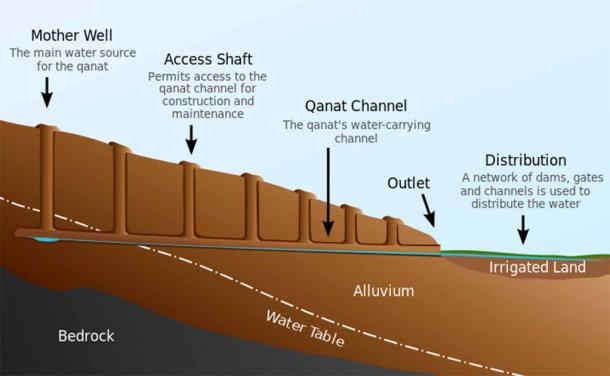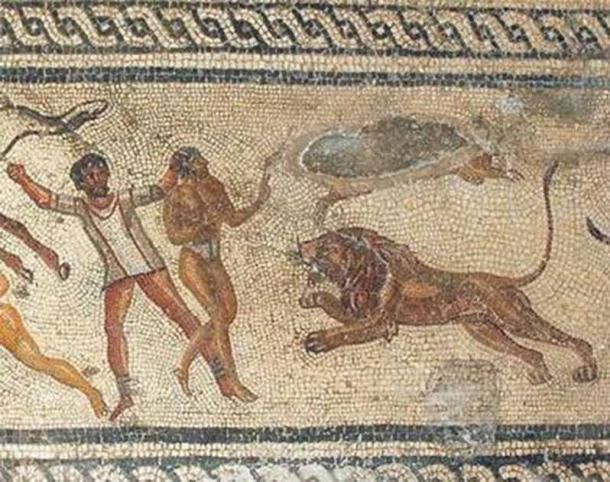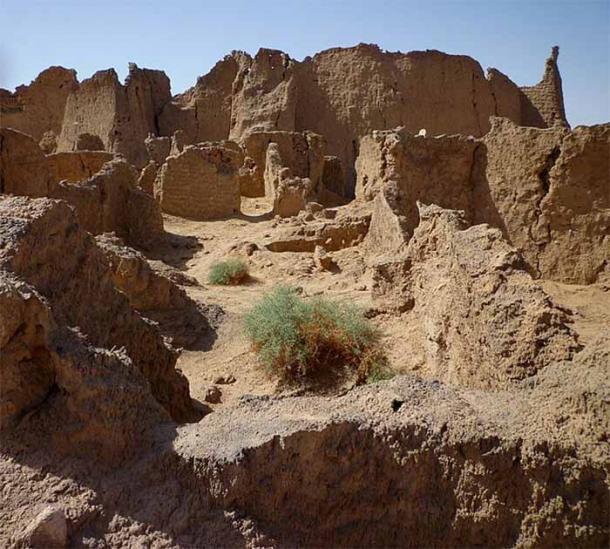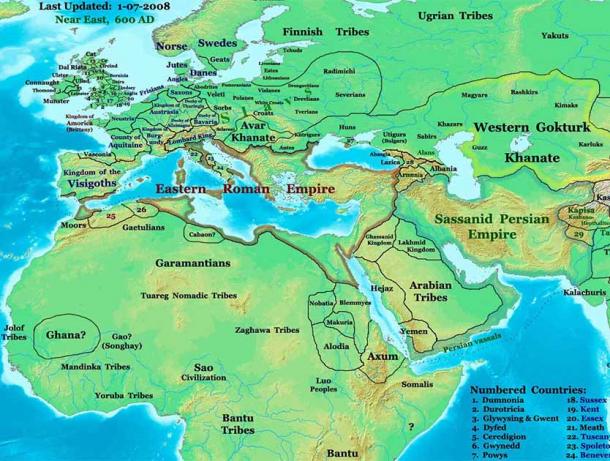The Garamantes, Ancient Masters of the Hostile Sahara
In the heart of the Sahara desert, an arid wasteland the size of the US, it seems nothing can survive. But there were some who mastered this most inhospitable of landscapes, and turned an empty land into their home. The ancient Garamantes flourished here, in what is now modern-day Libya. Emerging around the 1st millennium BC, the Garamantes established a remarkable society. These were not simply outcasts clinging onto life, they were a sophisticated people, their settlements characterized by innovative water management techniques and complex urban centers, and connected through extensive trade networks.
Despite the harsh desert environment, they thrived for several centuries, leaving behind a legacy that has endured to this day. How did they manage this, thousands of years ago, and what was their ultimate fate?
Masters of the Desert
At the core of Garamantian society was their mastery of water resources in an arid landscape. They developed an intricate system of underground tunnels and wells known as “foggaras” to tap into groundwater sources, allowing them to cultivate crops and sustain settlements in areas where water was scarce.

How a foggara, or qanat, was used by the Garamantes to bring water to the desert (Samuel Bailey / CC BY 3.0)
This technological innovation enabled the Garamantes to establish a network of agricultural oases that supported their population and facilitated trade with neighboring regions. In time, they were one of the most thriving urban societies in an otherwise arid, harsh landscape that is the North African desert.
The Garamantes were skilled builders and architects, as evidenced by the impressive ruins of their cities such as Germa, also known as Garama. Such urban centers featured well-planned layouts, fortified walls, and sophisticated infrastructure, including public buildings, granaries, and residential areas. The existence of these cities indicates a complex hierarchical society with specialized labor and centralized governance.
- The Sahara As We Know It Today Versus The Green Sahara It Once Was!
- Ghadames, Libya’s Pearl of the Desert

Detail from the Zliten Mosaic in Roman Libya depicting execution of Garamantian prisoners (Marco Prins / Public Domain)
Trade also played a vital role in the prosperity of the Garamantes, who acted as intermediaries between the Mediterranean world to the north and sub-Saharan Africa to the south. They exchanged commodities such as ivory, gold, slaves, and exotic goods with neighboring peoples, including the ancient Egyptians, Greeks, and Carthaginians. This trade network brought wealth and cultural exchange to the Garamantian civilization, influencing their art, architecture, and religious practices.
The Garamantes maintained diplomatic relations with their neighbors, often engaging in alliances and conflicts with other Saharan tribes and Mediterranean powers. They resisted attempts at conquest by outside forces, including the Romans, who sought to expand their empire into North Africa.
The Garamantes successfully defended their territory for centuries, preserving their autonomy and independence. They also conducted significant raids into Roman territories, beyond the borders of their provinces. This tells us that they also had a powerful army at their disposal.
The Identity of the Desert Peoples
For a very long time, scholars and historians debated about the exact origins and the ethnicity of this ancient tribe. The origins of the Garamantes are, for the most part, shrouded in myth and legend, with ancient Greek and Roman writers providing tantalizing but often contradictory accounts.
According to Herodotus, the Greek historian, the Garamantes were a nomadic tribe descended from the god Ammon and the Ethiopian queen Tinjis. This mythical ancestry suggests a divine lineage and reflects the importance of religious beliefs in Garamantian society.
Herodotus wrote:
“After ten days' journey again from Augila there is yet another hill of salt and springs of water and many fruit-bearing palms, as at the other places; men live there called Garamantes, an exceedingly great nation, who sow in earth which they have laid on the salt. The shortest way to the Lotus Eaters' country is from here, thirty days' journey distant. Among the Garamantes are the cattle that go backward as they graze, the reason being that their horns curve forward; therefore, not being able to go forward, since the horns would stick in the ground, they walk backward grazing. Otherwise, they are like other cattle, except that their hide is thicker and harder to the touch. These Garamantes go in their four-horse chariots chasing the cave-dwelling Ethiopians: for the Ethiopian cave-dwellers are swifter of foot than any men of whom tales are brought to us. They live on snakes and lizards and such-like creeping things. Their speech is like no other in the world: it is like the squeaking of bats.”
Subsequent historians have greatly dissected this account of Herodotus. They interpreted their chasing of Ethiopians as their great emphasis on slave trading. Historian Carlos Magnavita writes:
“Those taking Herodotus’ account verbatim might be disappointed that he remained silent on living merchandises potentially added to that gold (such as humans, i.e. slaves), but other parts of his text are conveniently interpreted with a view to slave raiding and trading: the Garamantes hunting the swift-footed Aithiopian Troglodytes on four-horse chariots. Whilst the chariots are identified in the form of Saharan rock art, the Troglodytes remain mysterious. Although the ancient Greek text does neither state whether these hunts were slave raids or not, nor where they actually took place, the frequent re-interpretation of this text passage was jointly responsible for the creation of the myth of Saharan slave raids against Black Africans in classical times. The scene – a drive-hunt on war-like chariots – gives rise to some speculation. Hunting people for other purposes than for enslaving them is admittedly hard to imagine, but nevertheless should be taken into consideration as long as speculation prevails.”
The Power Channeled from the Sahara
Archaeological evidence suggests that the Garamantes initially inhabited the Jebel Akhdar plateau in central Libya before expanding into the surrounding desert regions. Their transition from a semi-nomadic lifestyle to settled agricultural communities coincided with the development of their sophisticated water management systems. By harnessing the natural resources of the Sahara, the Garamantes were able to sustain growing populations and establish permanent settlements.
- The Ancient Tuareg: “Free Men” of the Sahara Desert
- Mystery of the Desert: The Lost Cities of the Sahara (Video)

The ruins of Garama, great city of the Garamantes (Franzfoto / CC BY-SA 3.0)
The peak of Garamantian power and influence occurred during the first millennium BC, when they controlled vast swathes of territory stretching from the Fezzan region in modern-day Libya to parts of present-day Algeria and Chad. Their dominance over key trade routes brought them wealth and prestige, allowing them to exert influence over neighboring tribes and kingdoms.
The Garamantes are also believed to have engaged in conflict with the Roman Empire during the late Republic and early Imperial periods. Roman sources describe military campaigns launched against the Garamantes in an effort to secure control over the lucrative trans-Saharan trade routes. These conflicts resulted in occasional skirmishes and diplomatic negotiations but ultimately failed to subjugate the resilient Garamantian civilization.
Despite their military encounters with outside powers, the Garamantes maintained a distinct cultural identity and way of life. Their society was characterized by social stratification, with a ruling elite presiding over a class-based hierarchy that included farmers, artisans, and traders. The Garamantes developed their own unique artistic styles, evident in the decoration of pottery, jewelry, and architectural motifs found at archaeological sites.
The Mystery of Garamantian Ethnicity
For many decades, the scholarly world was divided on the ethnicity and race of the Garamantes. Some suggested that they were light skinned, and linked to the Berber tribes.
Others, however, claimed that they were Black Africans. Only after extensive genetic research on the skeletal remains of deceased Garamantes, was it concluded that they belonged to the Mediterranean type, being termed Euroafricans.
“The Garamantes contained a significant component of light-skinned Libyans and some at least of these people were buried in monumental graves. This picture differs from the situation in the Sahara in the late Neolithic, as Chamla's work suggests a higher proportion of negroid types at that date, which might suggest that the creation of Garamantian civilisation involved the in-migration of at least some part of the population from regions to the north or northeast. The cemeteries contain a substantial number (over 50 percent) of individuals of either mixed blood or full negro physionomy. Some of these individuals may have been in poorer graves, but not all of them, suggesting that some individuals of mixed race or black skin were prominent within Garamantian society. Given the literary testimony of Garamantian raids against their 'Ethiopian' neighbours, it is likely that some of the negroes present were slaves or descendants of slaves. The maintenance of strong non-negroid traits into late and post-Garamantian contexts would seem to indicate that intermixing of the races was not completely open and may have been structured within Garamantian society.” (Mattingly, 2003)
Still there is no doubt that the ancient Garamantes traded extensively with all their neighbors, including the tribes of Sub-Saharan Africa. This trade resulted in cultural exchange, and possibly a lot of intermarrying, which made the Garamantes in many ways - unique.
Where Did They Go?
History is never standing in place. It changes, and great kingdoms change with it, often disappearing. The decline of the Garamantes coincided with broader historical shifts in the Mediterranean and Saharan regions.

The Garamantes, c600AD, dominated North Africa before the arrival of Islam (Talessman / Public Domain)
The collapse of the Western Roman Empire, the spread of Christianity, and the rise of Islamic civilization all contributed to the transformation of political and cultural landscapes. By the 6th century AD, the fortunes of the Garamantes began to decline. The rise of the trans-Saharan trade routes bypassed their traditional territories, diminishing their economic importance.
Additionally, environmental factors such as desertification and changing climatic conditions may have contributed to the abandonment of some Garamantian settlements. Gradually, their once-flourishing civilization entered a period of decline, and by the 7th century AD, Garamantian civilization had faded into obscurity, leaving behind enigmatic ruins and tantalizing clues about their past. In time, they had disappeared from the historical record completely.
The exact fate of the Garamantes remains a subject of debate among scholars. Some theories suggest that they were assimilated into neighboring populations, while others propose that they migrated to other regions or were absorbed by the emerging Islamic civilizations of North Africa.
The lack of written records from the Garamantian perspective complicates our understanding of their ultimate fate, leaving much of their story shrouded in mystery. To date, this tribe remains one great historical enigma, and historians yearn to know more about this seemingly powerful and very advanced civilization.
There is no doubt however that the ancient Garamantes were a remarkable civilization whose ingenuity, resilience, and cultural achievements left an indelible mark on the history of North Africa. Through their mastery of water management, urban planning, and trade, they thrived in one of the most inhospitable environments on Earth.
And that is no small thing. While their civilization eventually succumbed to economic, environmental, and perhaps political pressures, the legacy of the Garamantes continues to intrigue and inspire scholars and enthusiasts alike, offering valuable insights into the complexities of human adaptation and survival in the face of adversity. They will continue to be studied.
Top image: The Garamantes carved out a thriving civilization in one of the most inhospitable environments on Earth. Source: Superhero Woozie / Adobe Stock.
References
Borg, V. P. 2007. The Garamantes masters of the Sahara. Geographical, Vol. 79.
Gearon, E. 2011. The Sahara: A Cultural History. Signal Books.
Mattingly, David; Edwards, David (2003). Religious and Funerary Structures In Mattingly, D.J. (ed.). The Archaeology of Fazzan, Volume 1: Synthesis. Department of Antiquities, Tripoli. The Society for Libyan Studies. p. 233.
Smith, R. 2003. What Happened to the Ancient Libyans? Chasing Sources across the Sahara from Herodotus to Ibn Khaldun. Journal of World History.

















